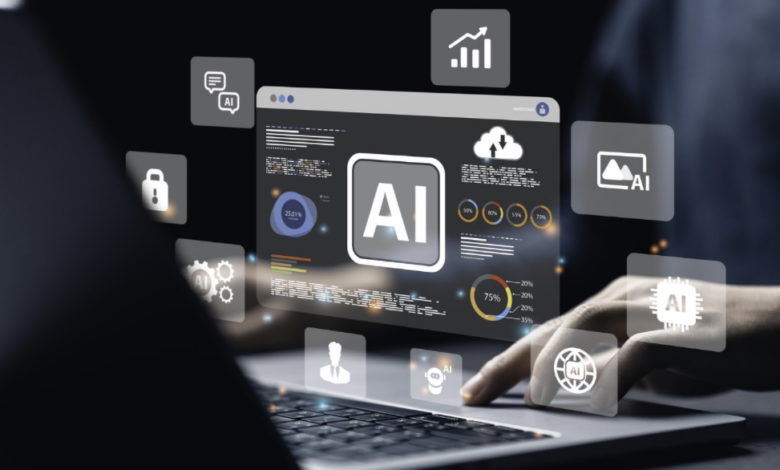
The UK government’s recent announcement of an AI opportunities action plan has been hailed as an effort to give teachers “their Sunday evenings back” and boost efficiency. While these ambitions are welcome, the reality is that building the necessary infrastructure and providing adequate training for schools to successfully roll out AI will take time.
The conversation about AI in schools also continues to be dominated by concerns about its use. While it’simportant we pay attention to the prospect of cheating, misinformation, and ethical dilemmas, it’s also crucial that we develop forward-looking measures to equip students with skills to use AI responsibly and effectively.
Schools must embrace AI not as a challenge, but as a tool to enhance learning and prepare students for future workplaces.
The AI Knowledge Gap Between Teachers and Students
One of the major challenges is that students are now experimenting with and adopting AI faster than teaching staff. Research conducted by RM Technology, which surveyed 1,000 secondary school students, revealed that 67% are using AI-powered chatbots like ChatGPT to complete assignments.
Despite this, over a third (36%) of the 500 teachers surveyed believe their students know more about AI than they do, and the majority (56%) believe that education professionals need formal training to fully understand AI’s capabilities.
This gap, in which students are experimenting more than their teachers, must be closed. AI is already a part of students’ lives. Rather than banning its use, schools should be equipping both teachers and pupils with the knowledge to use it responsibly. If AI is defining the future of work, it must also help to define the curriculum.
That’s why teachers need professional development opportunities to understand AI’s benefits and limitations. AI should not be viewed as a threat but as a tool that can support lesson planning, automate administrative tasks, and personalise student learning. Schools should also focus on incorporating AI into the curriculum itself.
From primary school onwards, students should also be taught the basics of AI, including how it works, ethical considerations, and how to use it safely. In secondary schools, AI concepts should be embedded across STEM subjects, ensuring students develop the computational thinking and critical reasoning skills necessary to work alongside AI in the future.
Laying the Foundations for AI Education
To integrate AI into schools effectively, we must also ensure that adequate foundational technology infrastructure is in place. Reliable connectivity remains a key issue, with many schools still lacking adequate broadband and WiFi coverage. The government’s Connect the Classroom programme is a step in the right direction, but more investment is needed to ensure all schools, particularly in rural areas, have access to high-speed internet. This is something RM Technology has been supporting schools with for over 30 years and will only become more important with the calls for an AI revolution.
It’s also crucial for schools to review how their data is organised. Introducing AI could bring risks if not handled properly, especially when it comes to sensitive student information. Schools need to make sure their data is properly checked, protected, and securely managed before using AI. This will help reduce risks, protect privacy, and build trust in AI solutions in education.
AI as a Teaching Assistant, Not a Replacement
The fear that AI will replace teachers is unfounded; everyone agrees that human input is still crucial to education.
Instead, AI has the potential to enhance education in several significant ways. Teachers spend an average of two hours per day on administrative tasks, such as grading, lesson planning, and tracking student performance. AI could automate many of these processes, allowing educators to focus on engaging with students in the classroom.
Beyond streamlining administrative work, AI can also help personalise educational experiences. By analysing student performance, AI tools can identify individual learning needs, helping those who are struggling catch up while enabling high performers to advance at their own pace. This tailored approach ensures that no student is left behind.
AI also has the power to make education more inclusive. AI-powered tools can support students with disabilities through features like speech-to-text capabilities, language translation, and adaptive learning pathways. By integrating AI thoughtfully into the classroom, schools can create a more accessible and supportive learning environment for all students.
As a result of these benefits, AI has the potential to enhance teacher retention. Workload is a major concern for them, and AI can alleviate some of this burden by reducing administrative tasks and making their job more fulfilling.
With the education sector facing challenges in recruitment, anything that can improve teacher satisfaction and ease the pressures of the job should be embraced.
Preparing Schools for an AI-Powered Future
Schools cannot undertake this transformation alone. The Department for Education must establish clear AI guidelines, while policymakers should work closely with education technology providers to ensure AI tools are safe, effective, and accessible to all schools. Public-private partnerships will be crucial in delivering the necessary infrastructure, teacher training, and curriculum development.
Additionally, parents play a vital role in shaping how AI is used at home. Many parents remain uncertain about AI’s role in education, and schools should provide guidance to help families understand how AI can be used responsibly to support learning.
There are also providers who can support schools with this process, like RM Technology. We offer a team of education consultants who can help with AI policy setting, as well as the technical design and implementation of solutions, such as broadband. Schools can rely on these resources for guidance in AI adoption. This ensures they are prepared for the future of education.
AI is not a passing trend; it is a fundamental shift in the way we work and learn. And if we want the UK to be at the forefront of AI innovation, we must start by ensuring that every child has access to the digital tools and education necessary to thrive in an AI-driven world.
The time to act is now. By embracing AI as a powerful educational tool, schools can bridge the digital skills gap and equip students with the knowledge and confidence to shape the future, rather than be left behind by it.




